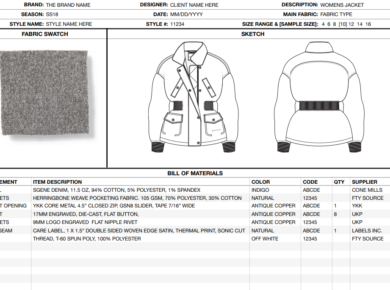The challenge for many businesses using a supplier intelligence platform lies in making an informed decision on the best supplier for their needs, especially when interactions are entirely digital.
Choosing a supplier from across the globe, without physically visiting the supplier’s facilities or speaking face-to-face, might seem daunting. And while supplier profiles on our platform, or even their websites, provide useful information, there might still be details left uncovered.
Supplier Profiles & Website
Let’s look at what makes a supplier information valuable:
Is there a match between your project requirements and the description and products highlighted in the supplier’s details? Take some time to thoroughly review the profiles and website of suppliers. Does it appear that the supplier has the capacity to fulfill your project?
Feedback ratings can provide valuable insights, yet the most reliable indicator of a supplier’s performance is their recurring clientele. Platforms like Sourcing Playground facilitate access to verified data about a supplier’s client relationships and their duration. These verified relationships play a pivotal role when assessing potential suppliers.
Verify the type of supplier. If you want to work directly with manufacturers, ensure the profile identifies them as such (instead of a trading company which resells from manufacturers). The size of the supplier also matters. A small project might not be the best fit for a manufacturer with thousands of employees, and vice versa.
Scrutinize the supplier’s capabilities to ascertain whether they coincide with your project requirements. Assess their business category and specific area of expertise. For instance, if you’re seeking a textile manufacturer and their specialization is in bags and shoes, consider exploring other options. Our platform provides detailed insights into a supplier’s past sales, including product-specific percentages, to confirm their specialization aligns with your needs.
When a supplier purports to have collaborated with renowned brands, don’t shy away from seeking evidence or references. A reputable supplier should readily validate such assertions. Our platform streamlines this process by clearly displaying client relationships on supplier profiles.
Check any certifications for authenticity, making sure they are in the same name as the supplier and are up-to-date. Our platform verifies all certifications.
Should you have any questions or doubts, you can directly contact the supplier. Transparency and clear communication are essential in forging successful supplier relationships.
the most reliable indicator of a supplier’s performance is their recurring clientele
Requesting Quotes and Evaluating Responses from Suppliers
After exploring the supplier’s details and gauging their fit for your project, the next step is to reach out to them directly to request a quote.
When you receive a quote from a supplier, here’s what you should look for:
Personalized Response: The supplier’s response should be tailored specifically to your project. An introduction that mentions your name and project specifics indicates that they’ve taken time to understand your needs. Generic responses might imply a lack of attention to detail and an impersonal approach to your project.
Accuracy in Quotation: Has the supplier quoted exactly what you asked for? It’s crucial to double-check this rather than assuming. Make sure you both share the same understanding about the project and have not made assumptions about project details. Check that the minimum order quantities are exactly what you requested.
Price Comparisons: Compare the prices quoted with other suppliers. If there’s a significant deviation (either too high or low), it might be a mistake or misunderstanding. Clarify these discrepancies to ensure everyone is on the same page.
Lead Time Evaluation: Is the lead time reasonable? Compare it with the lead times from other quotes. While suppliers may provide longer lead times to accommodate potential production issues, extremely short lead times might indicate unrealistic promises or lack of experience. Discuss any concerns with your supplier.
Value Proposition: Suppliers should be able to articulate why you should work with them. This message should be personalized and indicate the supplier has thoroughly understood your project and profile. It should contain unique value-additions the supplier offers compared to their competitors.
Communication is key. If you need clarification or have questions, don’t hesitate to reach out to the supplier. Open dialogue helps establish clear expectations and fosters a successful relationship.
Supplier Comparison / Quotes Received
You can compare the quotes you have received from the various suppliers that have responded to your project. Please keep in mind what we have highlighted in the above sections, as points of reference;
The quotes should be relatively uniform. There should not be any major price differences between the suppliers. If one supplier’s price stands out as either too high or low, discuss with the supplier. If the price is too high, you can be relatively direct, and tell them for example, their prices are 25% higher than other quotes you received. Ask them to re check their costing and confirm exactly what they have costed on. If the price is too low, you need to be a bit subtler. You do not want them to increase their prices just to be inline with the other suppliers but it could also mean requirement misunderstanding so it is worth double checking technical details.
If the technical details are correct, there are a number or reasons a supplier can offer lower prices than competitors. They might have some excess capacity between orders that they simply want to cover fixed cost on. This is just one of a myriad of reasons. You need to probe more gently. Ask them exactly what the price includes to ensure they have covered everything.
Never mention that their price seems too low. You would be surprised how many buyers do this. You can guess what happens next. The supplier will admit they made a mistake in the costing and raise prices 20%.
Ensure that the size of suppliers is also relatively uniform. As mentioned, for a smaller order, a smaller supplier will probably offer more competitive prices. If you get five quotes. Four from 200 worker factories, and one from a factory with 1 500 workers, it will skew your quotes, simply because the bigger factory has much larger overheads.
Do not only use price to choose a supplier. Many buyers only look at prices. Do this at your peril. They often end up paying a lot more when the supplier delivers a month late and the quality is poor. Look at each supplier’s clients. If one supplier stands out here with long term relationship with similar brands, a higher price might be worth paying for the peace of mind. That being said, any supplier is only as good as their last order. Generally, do not only chase the lowest price. This is a risky buying strategy, and is an article on its own.
We hope this article gives you further insight into Sourcing Playground’s platform, and how to get the best supplier for your specific project.





